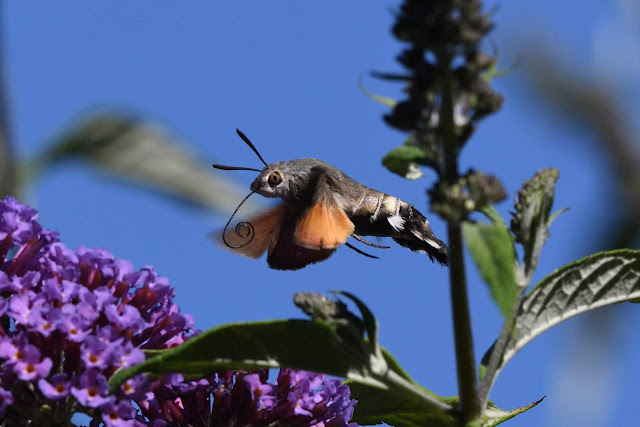Hummingbird Hawk Moth & Bee Hawk Moth........Natures wonders!

One of the most amazing creatures to watch, the Hummingbird and Bee Hawkmoths actually beat their wings faster than an actual Hummingbird! The following photo's were all taken with my Nikon D500 and Nikon 70-200 f4, or 200-500 f5.6 lens. Like its namesake, the Hummingbird Hawk Moth hovers in front of flowers, collecting sweet nectar from within. In place of a beak it has a long straw-like proboscis that it uses to siphon off the sticky fluid. At roughly an inch long this proboscis is nearly the length the moth’s body, so it keeps the appendage coiled up tightly when not in use. The Bee Hawkmoth is from the same family as the Hummingbird Hawk Moth, but is easily distinguishable, by its brighter colouring and transparent wings. Similar to other hovering insects, both generate lift by moving their wings in a shallow figure-eight pattern. This motion creates a spinning vortex of air on the upper surface of the wing, which generates a well of low



